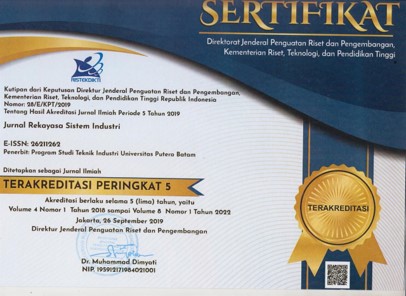ANALISIS KANDUNGAN CADMIUM (Cd) DALAM AIR MINUM DEPOT ISI ULANG BATAM
Keywords:
Heavy metal Cadmium (Cd), Refill drinking waterAbstract
Water is the main problem of natural resources needed for the livelihood of the people, even by all living creatures which include quality and quantity who are unable to meet the needs of the community. Number of pollution in the river makes people use other water sources such as ground water. Water pollution characterized by a change in the physical, chemical and biological water. Due to human activity as the main cause of heavy metal contamination Cadmium (Cd) on the marine environment and cause disturbances in biological systems because it can easily accumulate in sediments and organisms. National Food and Drug Agency of the Republic of Indonesian (BPOM RI) tested the quality of water production of refill drinking water in 5 cities find the 9 products containing Cadmium (Cd), which exceeds the maximum allowed. By because that, for in anticipation of heavy metal pollution Cadmium (Cd) in water drink with method simple randomized sampling 6 samples refill drinking water that is taken is Salsabila Batam Center, Pak De Qua Tiban, Fun Qua Batu Ampar, Fresh Qua Bengkong, Salwa Qua Batu Aji, and Alam Qua Piayu sub-district of Batam city derived from the raw water source of drinking water for testing of heavy metals Cadmium (Cd) in the laboratory PT. Sucofindo Batam. The metode analysis used by the standard of the Standart Methods for Water and Waste Water American Public Health Association, 22 nd eddition 2012 and standard analysis for parameters of heavy metals Cadmium (Cd), which method 3111B (Direct Air-Acetylene Flame Method). Analysis research laboratory PT.Sucofindo Batam for heavy metal Cadmium (Cd) from to six sample obtained of < 0.003 mg/L, this means still located below the quality standards set by Regulation of the Minister of Health No. 492 Year 2010 of 0.003 mg/L.
















